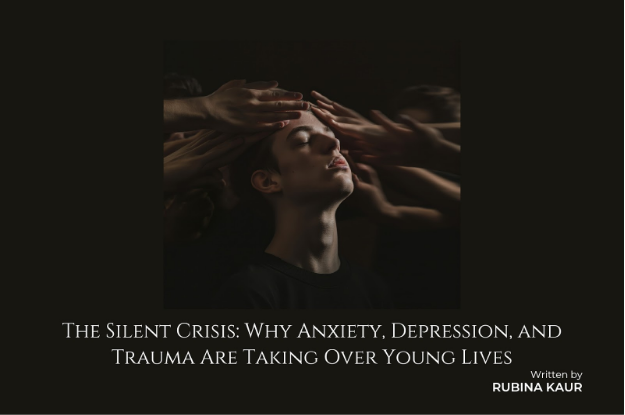








Mental health is one of the most crucial elements of human well-being, yet it is often misunderstood or overlooked. Anxiety, depression, and trauma are three interconnected conditions that can affect every aspect of life, from relationships and career to physical health and daily functioning. Understanding how these challenges manifest is the first step toward healing and creating a healthier balance in life.
Anxiety is a state of persistent worry, nervousness, or fear about future events, often accompanied by physical symptoms like rapid heartbeat, sweating, or restlessness.
Depression goes beyond temporary sadness. It is characterized by deep feelings of hopelessness, loss of interest, and difficulty functioning in daily life.
Trauma is an emotional response to distressing events such as abuse, accidents, or loss. It can lead to long-term mental health struggles, including post-traumatic stress disorder (PTSD).
While each condition is unique, they often overlap and feed into one another, creating cycles of emotional and psychological struggle.
Mental health challenges deeply affect how people connect with others:
Healthy communication, empathy, and therapy can help rebuild trust and connection.
Anxiety, depression, and trauma often show up in the workplace:
Workplaces that support mental health through counseling, flexible schedules, and stress-reduction strategies can make a significant difference.
Mental health and physical health are deeply linked.
Holistic approaches—exercise, mindfulness, balanced nutrition, and professional therapy—help bridge the mind-body connection.
Daily routines are often disrupted:
Small, manageable steps toward healthy habits can help regain stability.
While each journey is unique, common strategies include:
Recovery is not about erasing anxiety, depression, or trauma—it is about learning to manage them and regaining control over life. With compassion, professional help, and supportive environments, individuals can rebuild resilience and live meaningful, balanced lives.
In today's fast-paced, hyper-connected world, mental health challenges among young people are at an all-time high. Anxiety, depression, and trauma are no longer rare conditions—they have become common struggles that shape the lives of millions of youngsters worldwide. This growing crisis raises an important question: why are today's youth more vulnerable than ever to mental health issues?
Let's explore the reasons behind this alarming trend and how it affects every aspect of young lives.
One of the biggest contributors to anxiety and depression among youngsters is the relentless pressure to succeed academically.
The digital age has changed the way youngsters interact with the world. While technology has its benefits, it also creates significant mental health challenges:
This digital pressure often intensifies feelings of loneliness and inadequacy, especially during vulnerable teenage years.
Many youngsters carry emotional wounds from their early years. Trauma during childhood—such as neglect, abuse, or witnessing domestic violence—often resurfaces in adolescence and adulthood.
Without proper support, these emotional scars can last for decades.
Adolescence and early adulthood are crucial stages for identity formation. However, many young people face overwhelming pressure from peers and society.
The future feels increasingly unstable for many young people. Rising living costs, job insecurity, and uncertain career paths create constant stress.
Even though awareness is growing, mental health is still heavily stigmatized in many cultures.
As a result, many suffer in silence, hiding their struggles until they become overwhelming.
The impact of anxiety, depression, and trauma on youngsters is profound:
This crisis not only affects individuals but also families, communities, and society as a whole.
While the situation is serious, recovery and resilience are possible:
Healing requires both personal effort and systemic change. Schools, families, and communities must work together to create safe spaces where mental health is prioritized.
Anxiety, depression, and trauma among youngsters are not signs of weakness—they are signals that the world around them is increasingly demanding, stressful, and, at times, unsafe. By addressing the root causes—academic pressure, digital stress, family trauma, and lack of support—we can create a healthier environment where young people thrive instead of merely survive.
The silent crisis can no longer remain silent. The time to act is now.
If you or someone you know is struggling with anxiety, depression, or trauma, professional support can make a significant difference. Contact us to learn more about our mental health counseling and therapy services.
If this article resonated with you, share it with others who might benefit from these insights.